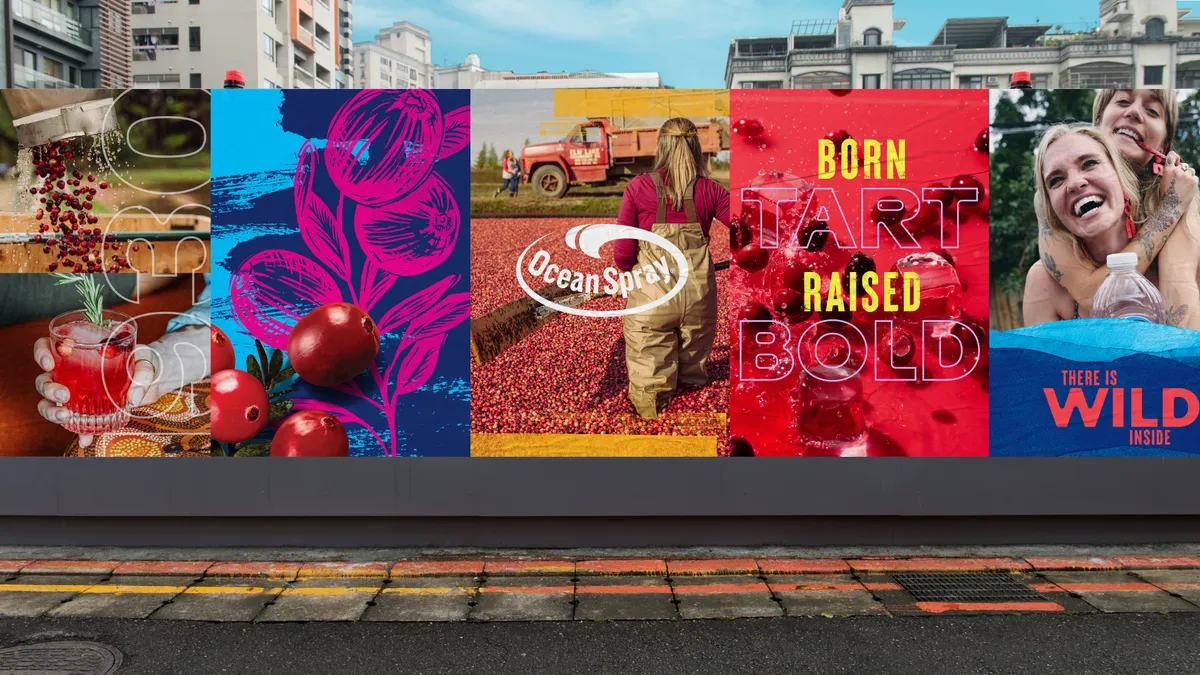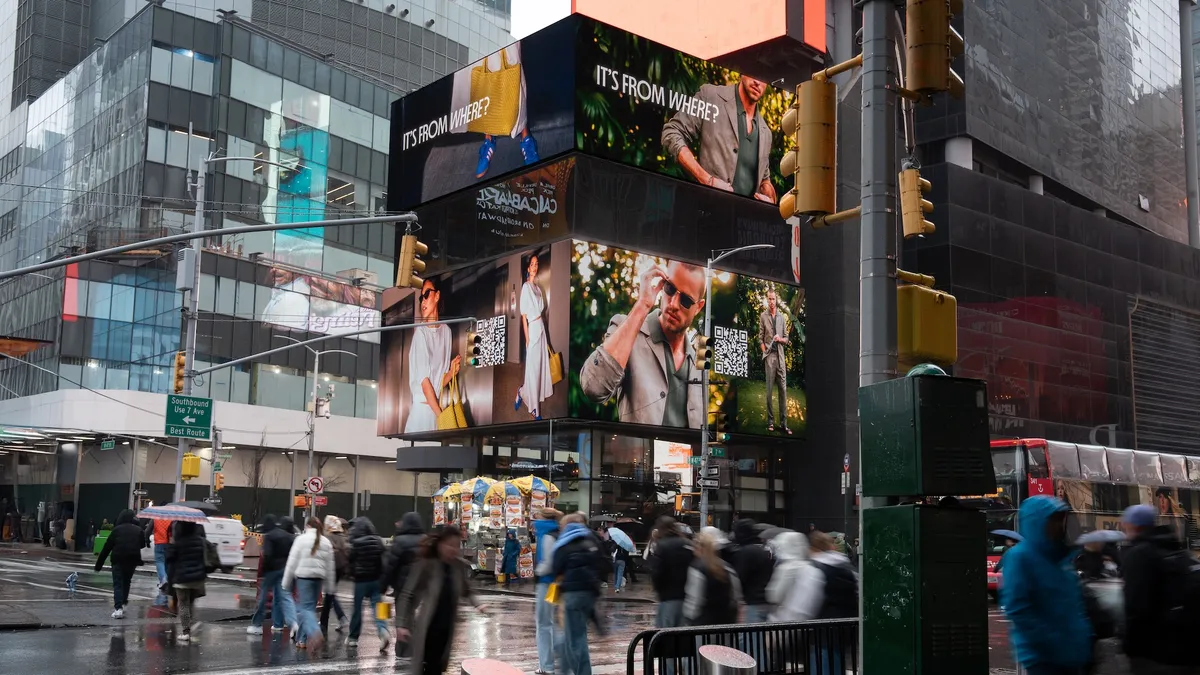A futuristic digital science lab, Billboard-charting original songs and a computer-generated brand ambassador are just a few of the strategies major beauty brands have adopted recently in hopes of winning over Gen Z. The generation, known for its rapidly evolving nature, expects marketing innovation as a baseline, which has forced legacy giants to pull from a new playbook.
While younger consumers have long been a target for the beauty industry, the spending power of Gen Z is expected to overtake that of millennials by 2031. This spring, the cohort’s spending on makeup, skincare and fragrance rose 19% from the year prior, according to Piper Sandler. As the incentive to court the generation escalates, older, iconic marketers like Estée Lauder and L'Oréal have changed the way they do business. But ever-changing trends and flashy new entrants have made keeping up that much harder.
Behind the boosted beauty sales is spending on makeup, which alone grew 32% YoY, per Piper Sandler’s latest semi-annual Taking Stock with Teens report. The most favored brand by a long shot is E.l.f. Cosmetics (22%), followed by Selena Gomez’s Rare Beauty (11%), L'Oréal’s Maybelline New York (7%), L'Oréal (6%) and Rihanna’s Fenty Beauty (5%). Notably, the percentage of teens wearing makeup every day reached an all-time high (45%), with the frequency rising to over 50% for upper-income teens, according to Korinne Wolfmeyer, vice president and senior research analyst at Piper Sandler.
“There’s a big indication that things are opening up more, and makeup is a bigger priority in the wallet than maybe even pre-COVID,” said Wolfmeyer, who covers the beauty and wellness space.
E.l.f.’s magic touch
E.l.f., founded in 2004, has ranked No. 1 among Gen Z since last spring when it overtook Maybelline for the top spot. Preference for E.l.f. grew by 900 basis points YoY this spring, placing it ahead of Rare Beauty by a 10-point margin.
Credit for the brand’s success partly comes from an emphasis on prestige-quality products at a lower price point, according to Evan Horowitz, CEO and co-founder of creative agency Movers+Shakers, which has worked with E.l.f. for the past four years. The other half of the equation is a marketing execution that is well-timed and intentional.
“E.l.f. punches way above its weight in terms of the impact of the marketing, because it’s competing with much, much larger brands, like Revlon or L'Oréal,” Horowitz said.
The brand in May brought together popular TikTok creators Ian Paget and Chris Olsen, whose relationship and subsequent breakup was of major public interest on the app. Together, they intimately discussed their breakup while applying E.l.f’s products to one another. The effort, aptly titled “Make up over Makeup” garnered thousands of views.
E.l.f. in April also launched a content series, “Vanity Table Talk,” inspired by late-night talk shows, with actor Jennifer Coolidge, who the brand also worked with for its first Super Bowl commercial in February. The big game ad, a departure from the marketer’s typical social focus, promoted the TikTok-viral Power Grip Primer, while also nodding to Coolidge’s dreams of playing a role as a dolphin, a statement made with no hesitation at the Golden Globes in January, just a few weeks before E.l.f.’s commercial aired.
“That’s a great example of being very in the moment,” Horowitz said.
E.l.f. also became the first to launch a branded hashtag challenge on TikTok featuring an original song. Songmaking has been a popular tactic for E.l.f., which had its tunes appear on the Billboard charts next to Mariah Carey during the holidays, Horowitz said.
Zeroing in on social media, especially TikTok — Gen Z’s favorite social platform — has become the norm for marketers looking to connect with the cohort. However, social media’s influence on the beauty industry has been particularly elevated.
“With beauty, specifically, what we see is that if you walk into any Ulta and you ask the salesperson, ‘Hey, why is this product out of stock?’ they will probably say there was a viral TikTok about that,” Horowitz said.
Blending in, standing out
For Maybelline, bigger bets on social media, especially through the lens of creators, has become a core strategy as it angles toward younger consumers. Such efforts are credited with fueling the brand’s Sky High line of mascaras, an over $100-million-dollar business, according to Jessie Feinstein, Maybelline’s senior vice president of marketing. For instance, before and after videos on TikTok promoting the brand’s Lash Sensational Sky High mascara have garnered over 400 million views.
A reliance on social represents a departure for the century-old brand, which in recent years has dramatically diversified its media budget, Feinstein said. The pivot has paid dividends, as L'Oréal in the first quarter credited its 13% year-over-year growth partly to Maybelline.
Accordingly, Maybelline has dipped its toes in a wide range of channels frequented by younger consumers, including activations on the storytelling platform Wattpad for Mental Health Awareness Month and the launch of a playable ad, “Maybelline Mascara Merge,” that nodded to the rising popularity of mobile gaming. The brand even created its own digital avatar, named May, earlier this year to help with future metaverse activations. Feinstein admits the brand has been slow to dive fully into the metaverse as it looks to effectively communicate value, an aspect of the channel that is still being explored.
Other success points for the brand include Maybelline’s launch of its Super Stay powder, which was marketed earlier this year by bringing together two of beauty’s most popular influencers, Mikayla Nogueira and NikkieTutorials. The two were paired as part of a collaborative, in-person masterclass alongside smaller creators, known to the brand as “babellines.” The move delivered valuable feedback and talking points surrounding the product, which was used to inform its rollout.
“That’s a great example, in the last year, of how we launched differently,” Feinstein said. “We normally would have done a national television campaign, spent a ton of money on traditional media.”
The blend of social media and creators to market makeup has become increasingly popular as brands attempt to reach a wider audience. The rise of creators also comes as celebrities, who have historically served as spokespeople, step out on their own. Take Ariana Grande, whose brand, R.e.m. Beauty, recently secured additional funding, and Selena Gomez’s Rare Beauty, which has climbed to the top of the charts for younger consumers after being founded just a few years ago.
When it comes to defining Maybelline’s social presence and its babelline partnerships, successful activations entail integrating the brand into dialogs already being had among target consumers as opposed to simply showing up, Feinstein said.
“As a brand, especially on social media, you can’t just post on Instagram and say, ‘This is gonna go viral,’” she said. “It’s really about how you have a conversation with your consumer.”
Anti-aging skincare
As the cosmetics industry sees a major boost in sales, it comes at the expense of skincare, which this spring tracked lower spending than its counterpart for the first time since 2020. Still, the category grew 11% YoY, according to Piper Sandler’s Wolfmeyer.
Some brands have managed to gain staying power, with CeraVe (L'Oréal), The Ordinary (Estée Lauder) and Cetaphil (Galderma) remaining the top three favored brands among the younger generation for the last three surveys.
For Clinique, owned by Estée Lauder, engaging Gen Z has included a focus on both in-person and digital touchpoints. Earlier this year, the brand launched its “Protect Your Glow'' campaign around Coachella to promote its new Moisture Surge SPF 28 product. The effort kicked off with a Clinique Hydration House pop-up in Indio, California, along with a sponsorship of a Day Club Palm Springs pool party, which occurred over two weekends in April.
Over the course of the events, Clinique doled out 34,000 samples of both its Moisture Surge 100-Hour product and its Moisture Surge SPF 28 and garnered over 350 million earned media impressions, according to Beth Guastella, senior vice president and general manager for Clinique North America. The reach extended through social media, gaining 5.1 million video views on TikTok and Instagram.
The campaign is one of the latest attempts by the brand to form a direct connection to Gen Z that isn’t reliant on introductions from older consumers, like parents, Guastella said.
“Cross-generational introduction is common for us as we often see or hear stories from consumers about our products being introduced to teenagers by their moms who have been fans of the brand for years,” the exec wrote in emailed comments to Marketing Dive. “While this introduction is incredibly special to us, we designed this campaign to reach younger consumers where they are.”
Clinique — which also sells cosmetics — consistently partners with creators to help shift brand perception, especially among Gen Z, Guastella said. The brand in March launched The Clinique Lab, a virtual science experience where consumers can create a custom avatar and navigate through six different territories. The realm supplements Clinique’s in-store experience of the same name that debuted last year.
An emphasis on science within the lab experiences was both intentional and on-brand, Guastella added, noting that the company is dermatologist-founded. That could resonate with Gen Zers who look to influencers as an educational resource and increasingly use TikTok as a search engine.
Science has also been a focus for Neutrogena, which relied on an educational element for its TikTok debut. The Johnson & Johnson company teamed with Movers+Shakers to launch on the app, helping it reach Gen Zers at a time when some were challenging its credibility.
“When we first started working with [Neutrogena], which was three years ago, they were getting panned on social,” Horowitz said.
In response, Neutrogena in 2021 launched its first TikTok campaign, called “SkinU,” with an educational approach to skincare health and myths and a component that connected consumers with scientists. The move proved successful, with Neutrogena’s following on the app growing 582% in one month.
Neutrogena hasn’t shied away from going all out on social media since. In January, the brand launched “Hydro House,” again with Movers+Shakers, a social-first TikTok campaign that parodied reality TV dating shows and followed seven influencers vying for the attention of Neutrogena’s Hydro Boost Cleanser. The series fared well, with #hydrohouse gathering over 62 million views and one episode tracking over 33 million views.
“This is a brand that just three years ago was being heavily criticized and attacked,” Horowitz said.
Even despite a wide range of tactics available to reach Gen Z, the cohort first values authenticity, a quality that is less defined and often difficult to achieve. While it may be tempting to choose a buzzy platform to direct spending toward, Horowitz urges marketers to focus first on the message.
“What works with Gen Z is purpose and standing for something meaningful that they can get behind,” the exec said. “What I would encourage is that brands start with that, and then it’s [figuring out] what’s the best channel to tell that story.”























